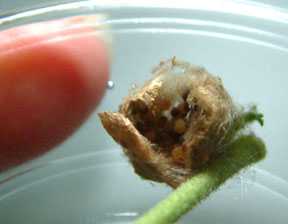The California Wildlife Habitat Garden; How to attract bees, butterflies, birds and other animals by Nancy Bauer
2012. University of California Press: Berkeley, CA.
 |
| CA native plants in our front garden |
Nancy Bauer’s book places a well-needed spotlight on creating wildlife habitat specifically in California yards. In five chapters highlighting specific kinds of habitat, she lays out easy to emulate ideas. Each habitat type, whether bird habitat or wildlife pond, includes beautiful photos and a “Garden Profile” of a real garden transformed into a living landscape.
 |
| Western swallowtail butterfly on native hollyleaf cherry |
Whether you are up for a dramatic change or willing to gradually create more natural plantings, Bauer’s book is a well-written and valuable resource. For ten years we’ve been gradually replacing exotic ornamental plants in our garden with California natives. Our water use has dropped and the biodiversity in our yard has tripled. With the native plants have come native insects, followed by the birds and reptiles that prey on those insects. If you create an island of habitat, wild creatures will find your oasis. You’ll not only have the pleasure of experiencing the butterflies and birds, but you will know you are providing them food and shelter vital for their survival.
Habitat comes in all sizes; Even a few will-chosen host plants on a terrace can create habitat. A couple of “Seasonal Plants for Hummingbirds” will transform a sterile patio. Creating habitat is like drops of water collecting to become a stream. Your small habitat connects with a neighbor’s and gradually we create corridors for wildlife. Be inspired by Bauer’s book to make a positive difference. What species will you help save with your wildlife habitat garden?
Other Book Reviews:
"Life in a Shell"
"Feathers; The Evolution of a Natural Miracle"
"Alex and Me"
"The Geese of Beaver Bog"
"Survival of the Sickest"










